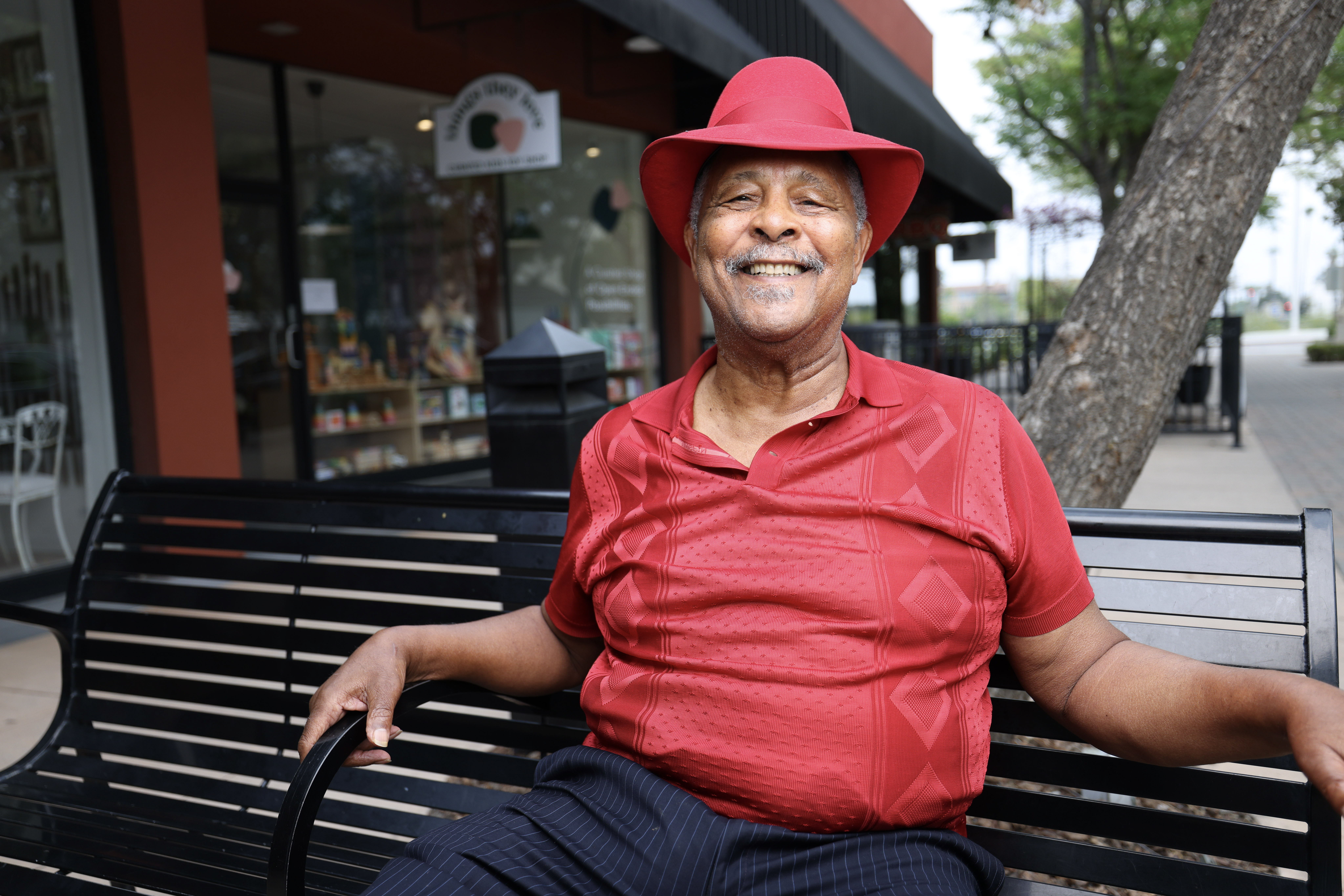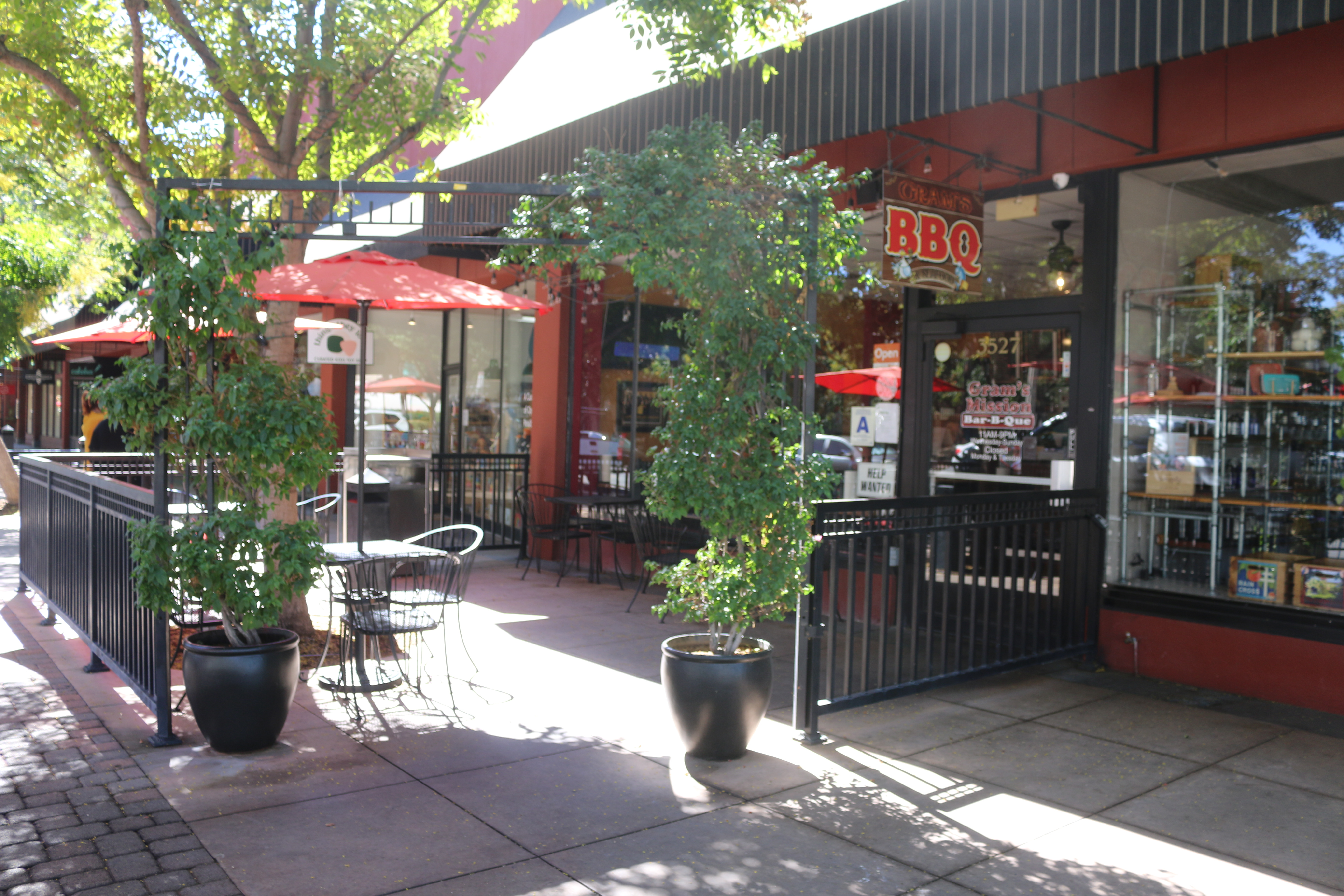By Gail Fry | Westside Story News Contributor
As Gail Fry, Contributor to The West Side Story, waited at Gram’s Mission BBQ to meet with its owner, Benita Bratton, a new customer was overheard sharing with a friend of how she was digging into the mac & cheese exclaiming, “it was so good.”
The new customer was not wrong as Fry placed her own order for beef BBQ ribs and a healthy side of fresh grilled vegetables, which was exceptionally delicious, despite the temptation to try the mac & cheese, or the fried green tomatoes.
Benita Bratton, the owner, explained that in 1987 her dad, Robert Bratton, was the founder of the Gram’s Mission BBQ restaurant, which for ten years was located directly across the street from the Mission Inn Hotel.
Robert Bratton found an opportunity, an abandoned restaurant building in a prime location. The name, Gram’s Mission BBQ, was to tie in the Mission Inn Hotel directly across the street, under renovation at the time of the restaurant’s opening day.

Photo of Robert Bratton
Benita Bratton recalled the struggles her father went through when his restaurant became a political hot potato and a struggle to exist ensued when the owner of the Mission Inn Hotel attempted to influence elected officials of the City of Riverside that he wanted something “classier” than Gram’s Mission BBQ, where meat was grilled outside in a big barrel.
In response Benita Bratton remembered, “The community banded together, and rallied in a petition to fight against the City of Riverside and its effort to close my dad’s restaurant.” Press-Enterprise humorist columnist Dan Bernsteinregularly covered her father’s battle with the city, she recalled.
Robert Bratton persevered with the community’s support and help that came from all cultures and races when they realized what the City of Riverside was doing to Gram’s Mission BBQ wasn’t right, as Benita Bratton remembered.
Eventually, Robert Bratton sued the City of Riverside which led the city to award him with a settlement and paid for his restaurant’s relocation to where they are today at 3527 Main Street in Riverside where the restaurant was equipped with an indoor smoker.
At the time, according to Benita Bratton, the area was an older dilapidated area of town with sidewalks in disrepair, the Convention Center, a Sheraton and a Holiday Inn, and abandoned businesses. However, Benita recalled, her father fought back through hustling. until where Gram’s Mission BBQ is today, 25 years later, basically in the sweetest spot in Riverside.

Photo of Gram’s Mission BBQ
Benita Bratton shared that she was there with her dad in 1987, when the restaurant opened, as she had restaurant experience from working at a restaurant in Las Vegas. But when they did not see eye to eye she left and worked for AT&T for many years.
Robert Bratton is a great businessman, a great community leader, people liked him like to be around him. “My dad knew how to make a business happen, how to hustle,” Benita Bratton credited, by then he had remarried, and had a new wife who liked to cook.
Benita Bratton shared she found herself becoming increasingly unhappy with her job at the phone company, and kept going to church and praying asking the Lord for guidance on what she should do, and the answer that kept coming was to help her dad at the restaurant.
AT&T was outsourcing jobs to other states and foreign countries, she had thoughts of retiring, there was an opportunity for a buyout, Benita Bratton explained she finally let go and surrendered to what the Lord wanted for her life returning to help her dad at the restaurant, however, their views still differed on its direction.
Benita Bratton explained she wanted a smaller menu, their foods to be really fresh, grilled every day, offering collard greens with turkey, not pork, to increase quality and service, add music, and desserts. Benita Bratton told West Side Storyshe took ownership of the business in 2012. A link to Gram’s Mission BBQ: https://gramsmissionbbq.com/

Photo of Benita Bratton
Benita Bratton shared she continues to go to her dad for guidance, that he is a visionary always looking at the big picture, reminding her the restaurant is about community, giving back, nourishing families, providing food, giving people jobs, sponsoring youth sports teams, scholarships for college, and looking out for each other.
Benita Bratton explained she started offering the grilled vegetables when her father suffered a stroke and needed to change his eating habits, she grew a vegetable garden, which increased her dad’s appreciation of vegetables.
“I love what I do, it’s hard work,” Benita Bratton acknowledged, that she wouldn’t have it any other way, observing, “Cooking brings people together, to the table, most people they want to eat with somebody, they don’t want to eat alone.”
Our weekly coverage of local news in San Bernardino County is supported by the Ethnic Media Sustainability Initiative, a program supported by California Black Media and Ethnic Media Services to support minority-owned-and-operated community newspapers in California.
 Westside Story Newspaper – Online The News of The Empire – Sharing the Quest for Excellence
Westside Story Newspaper – Online The News of The Empire – Sharing the Quest for Excellence


